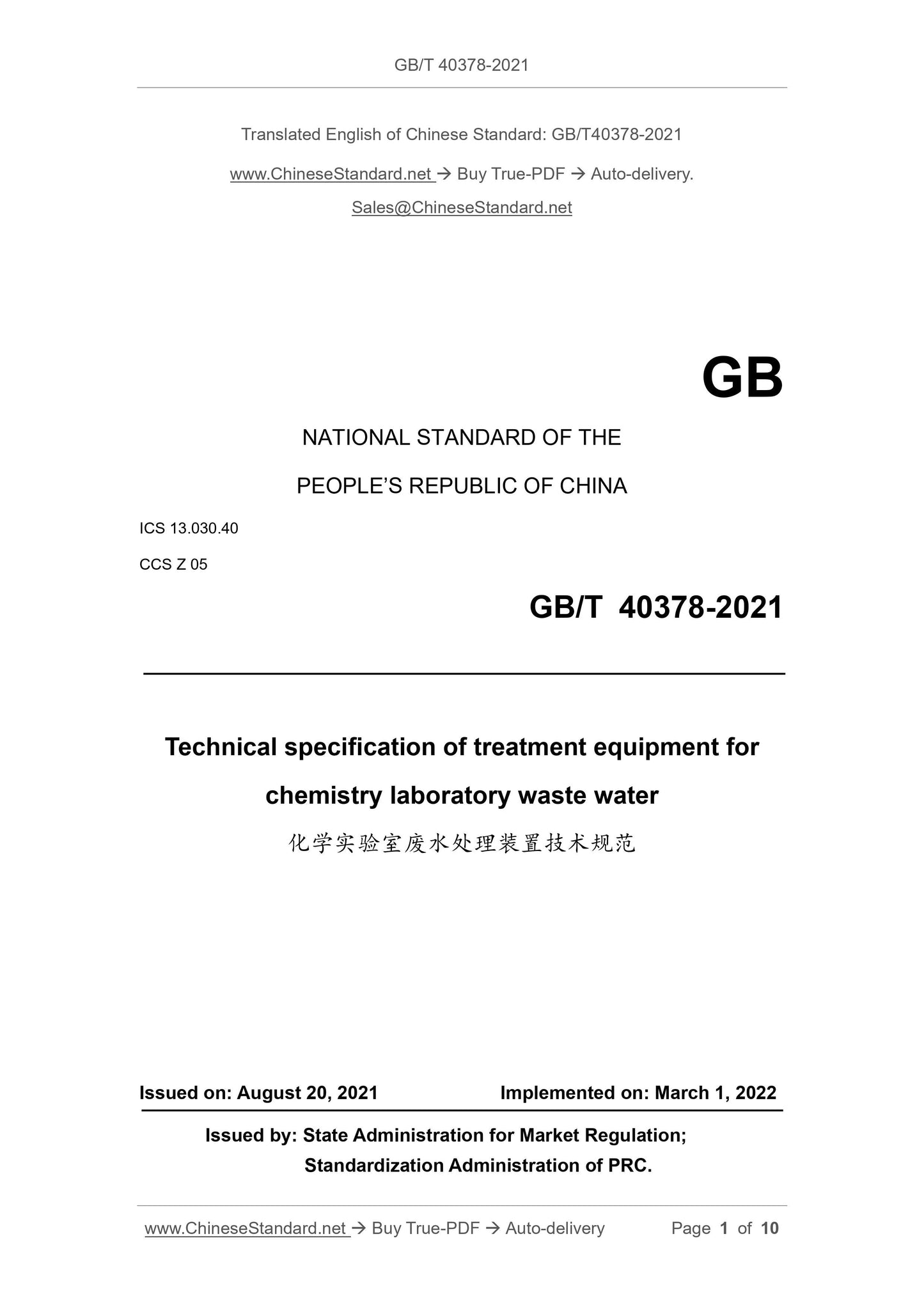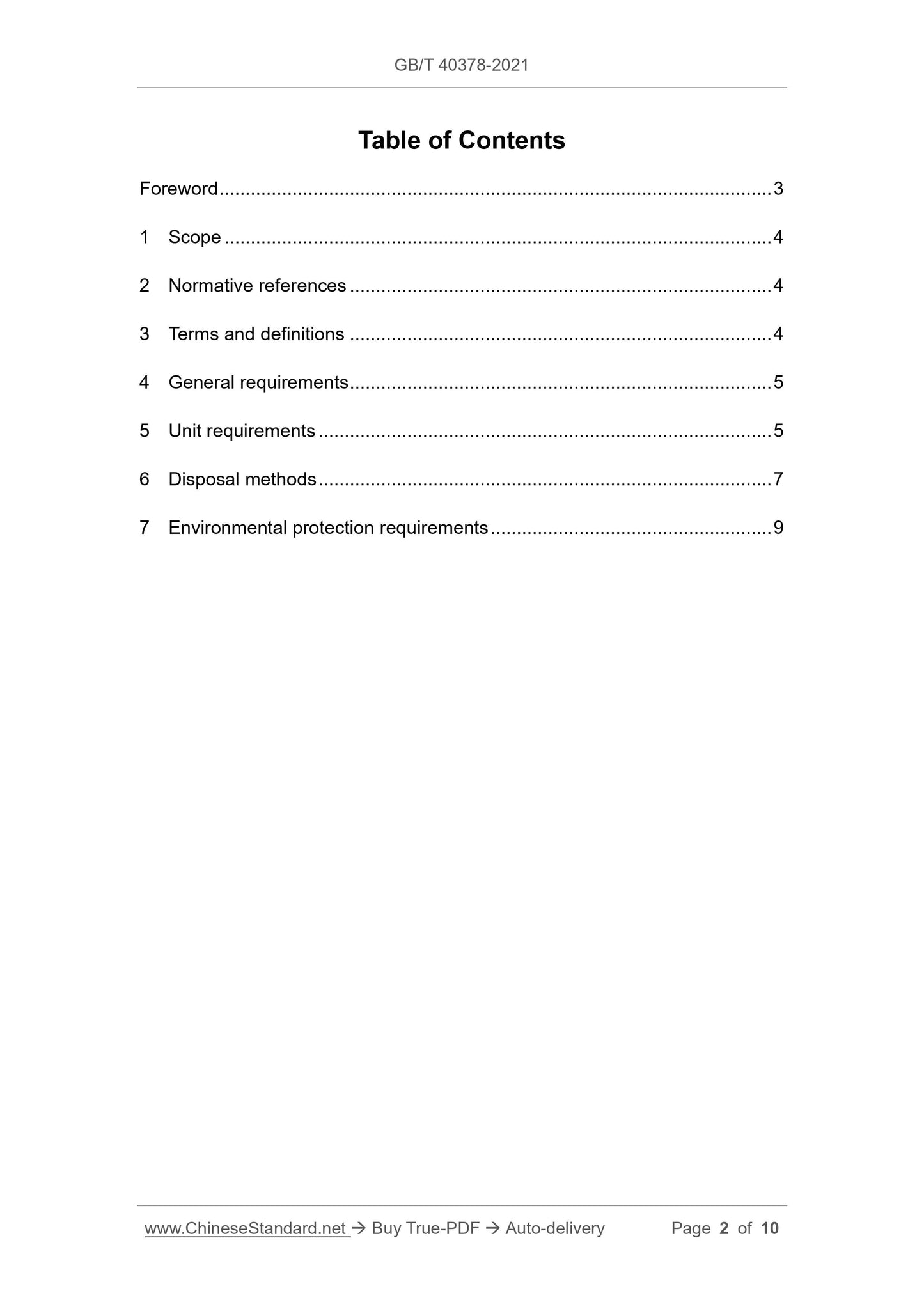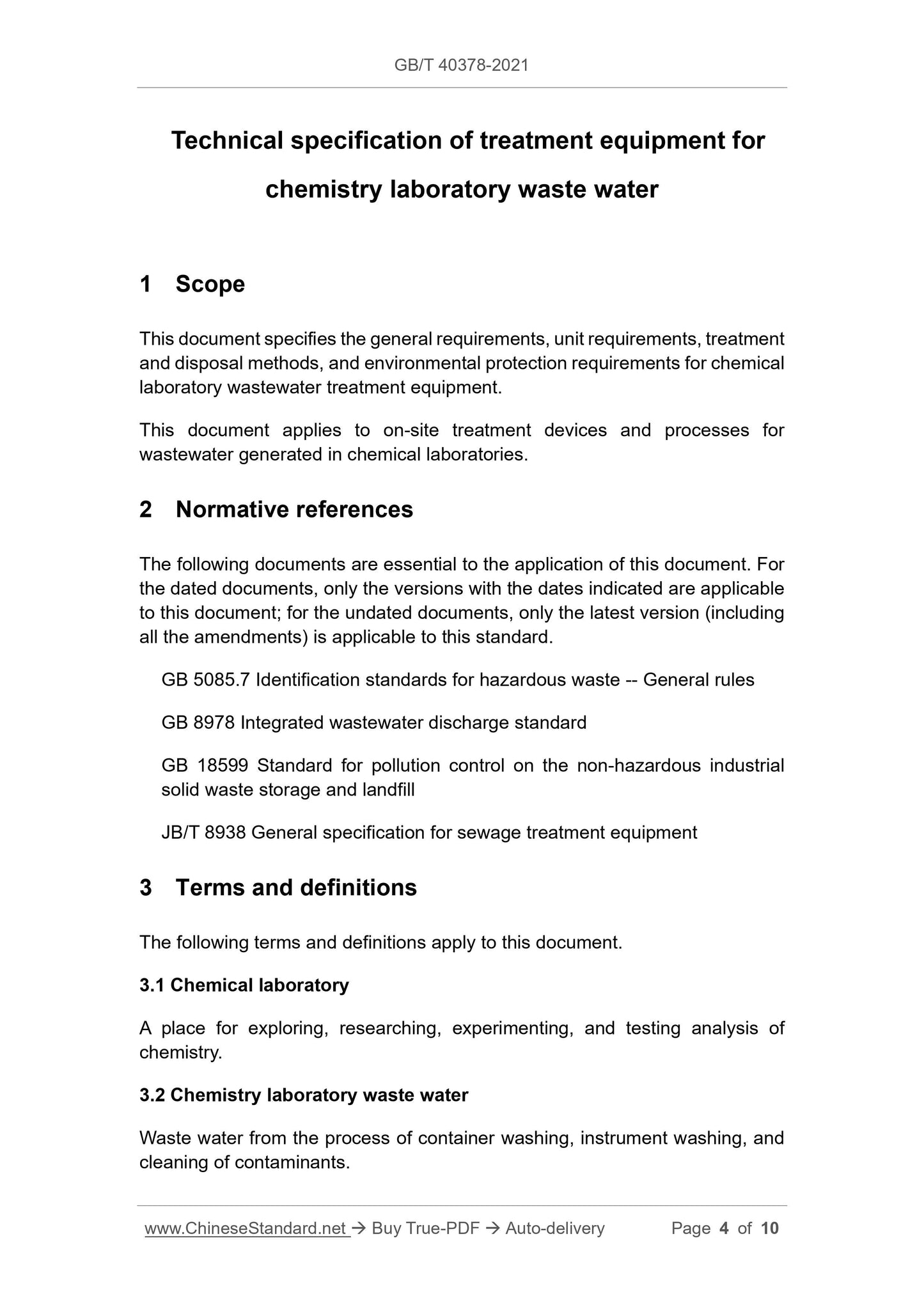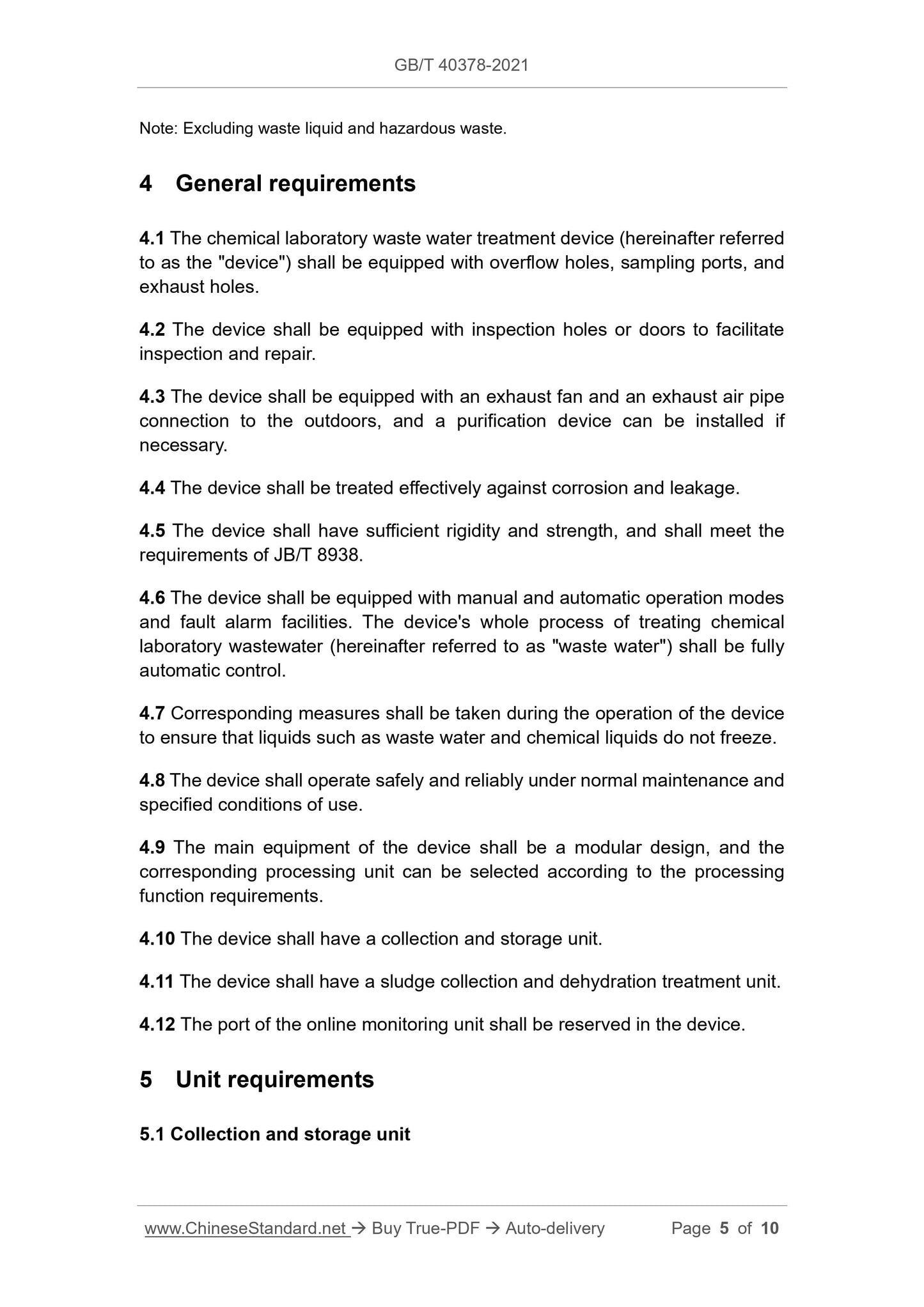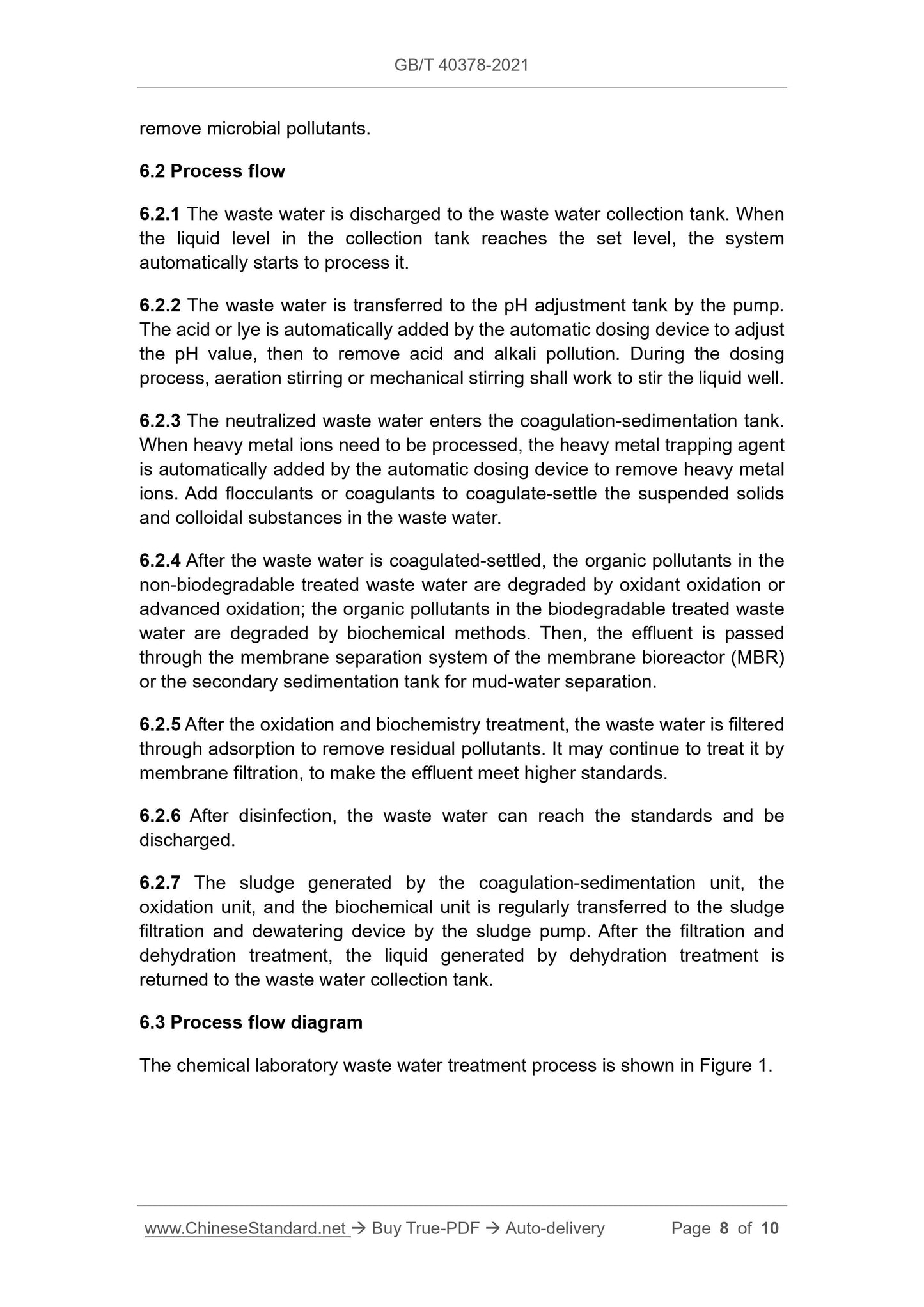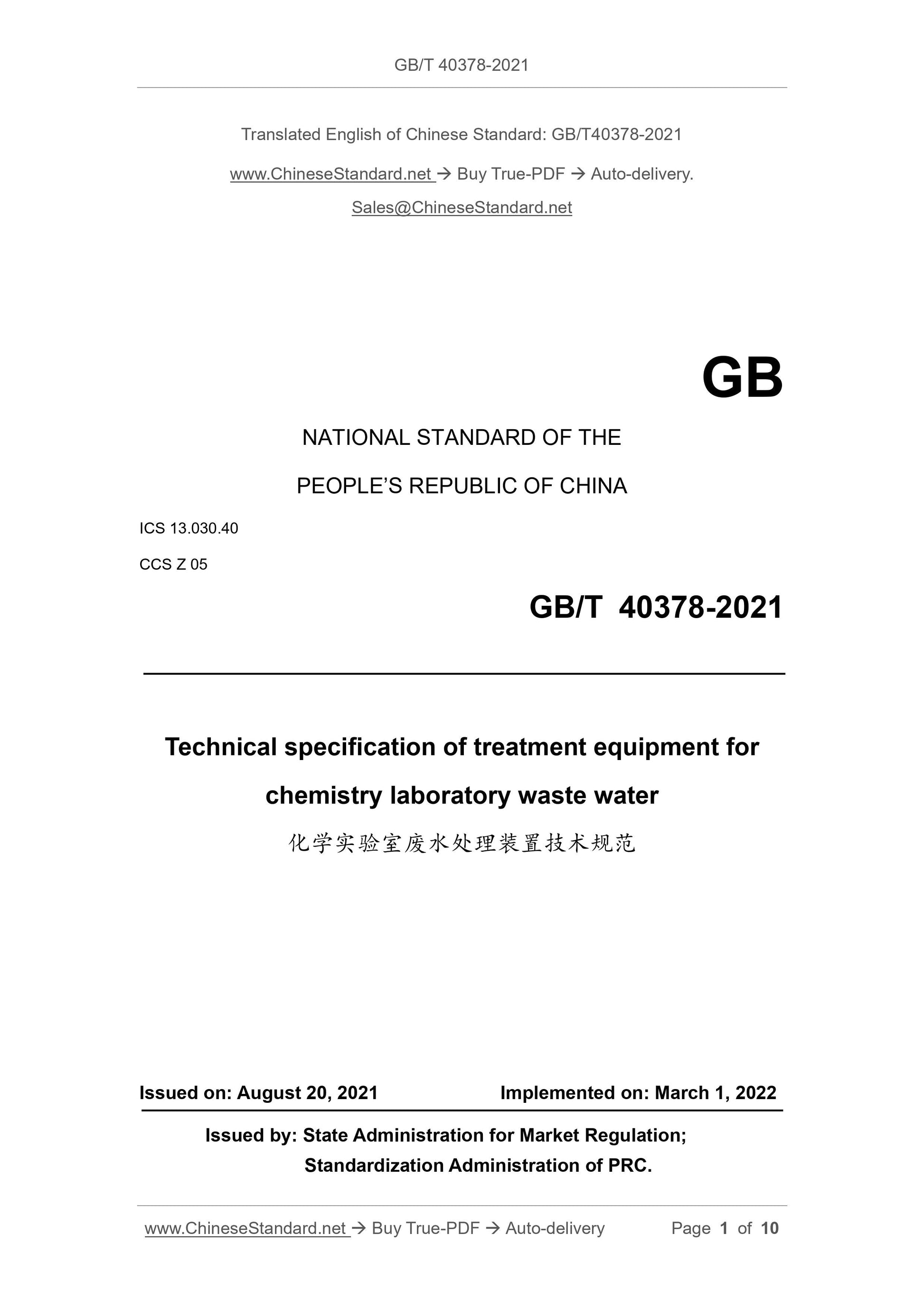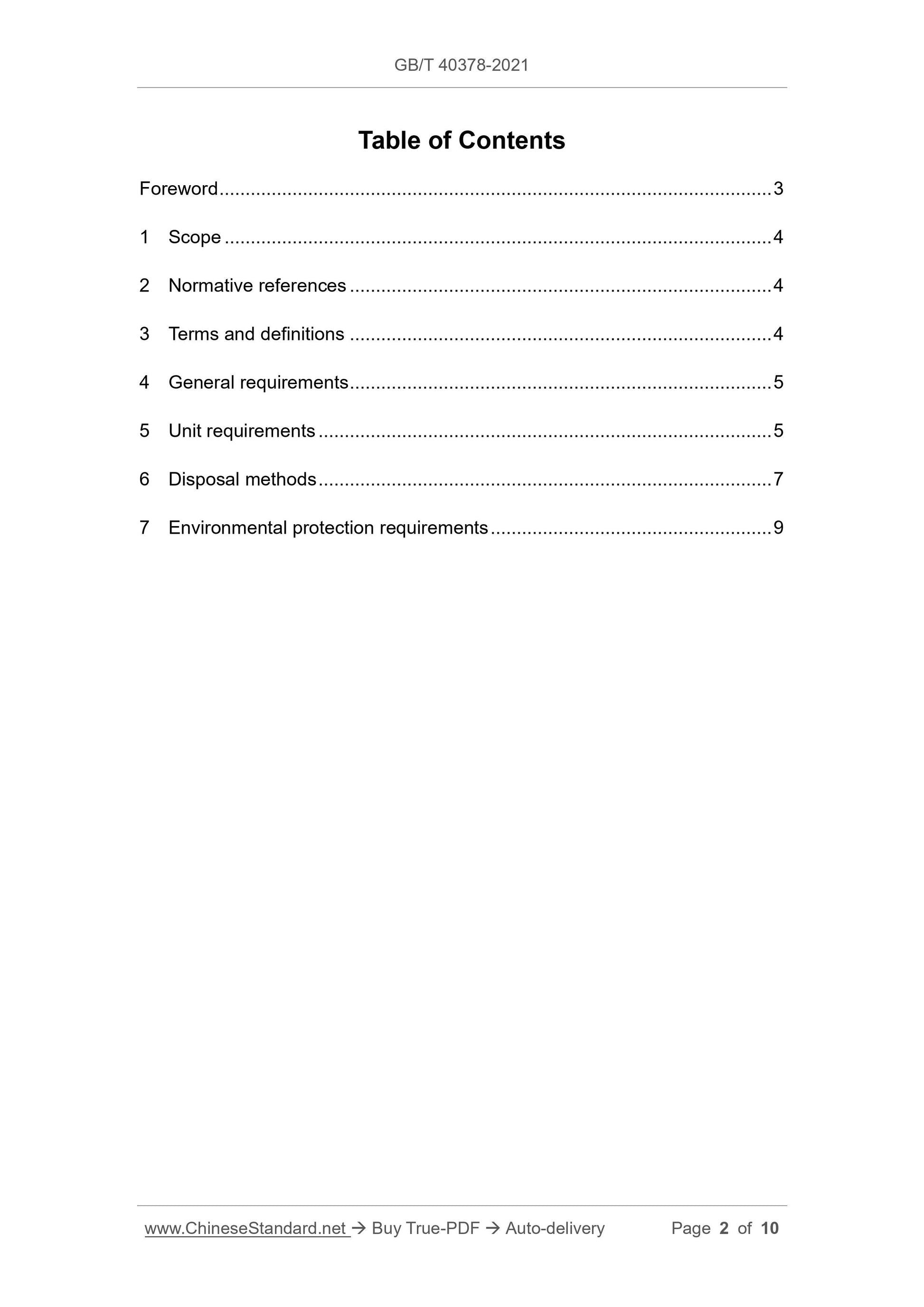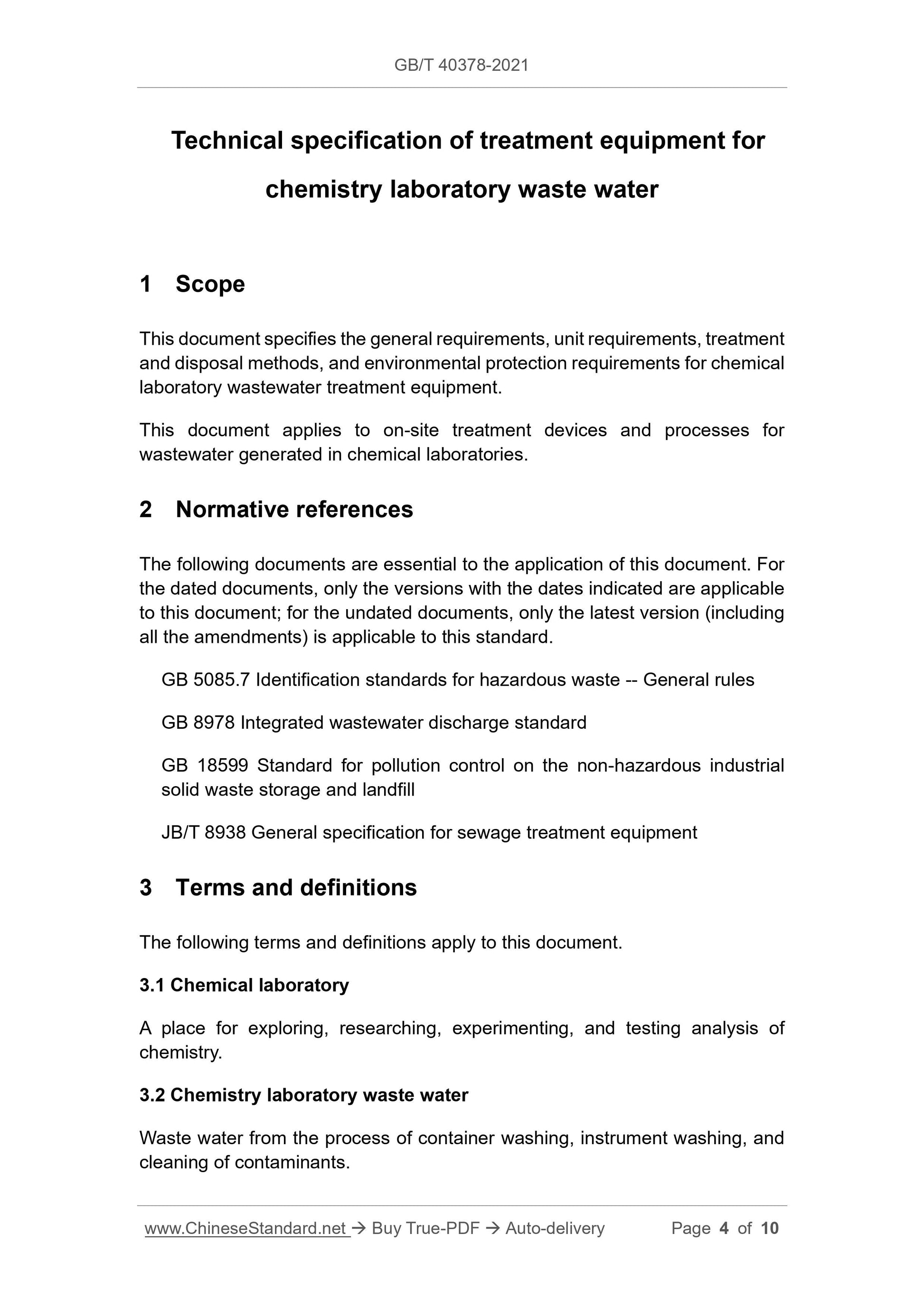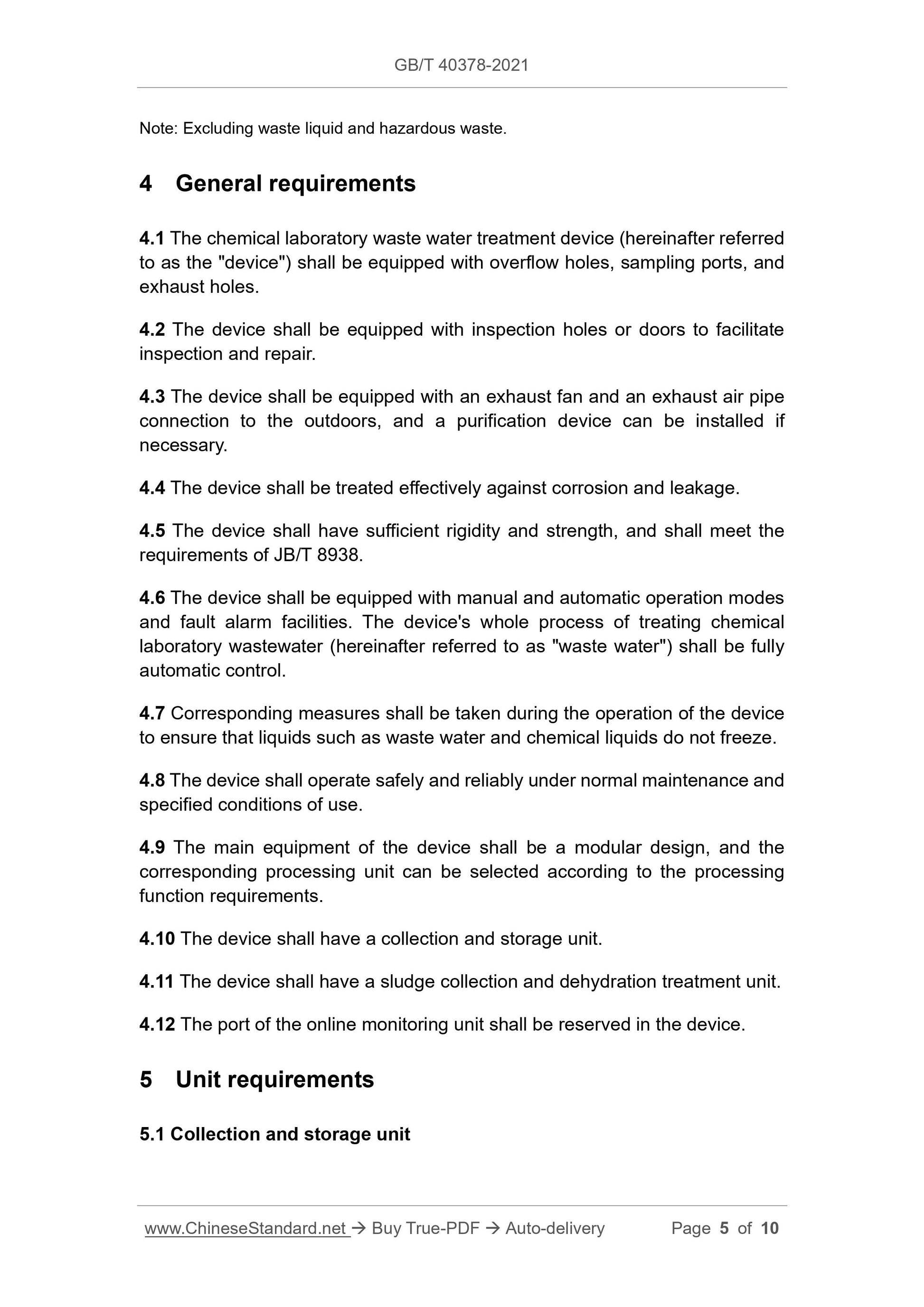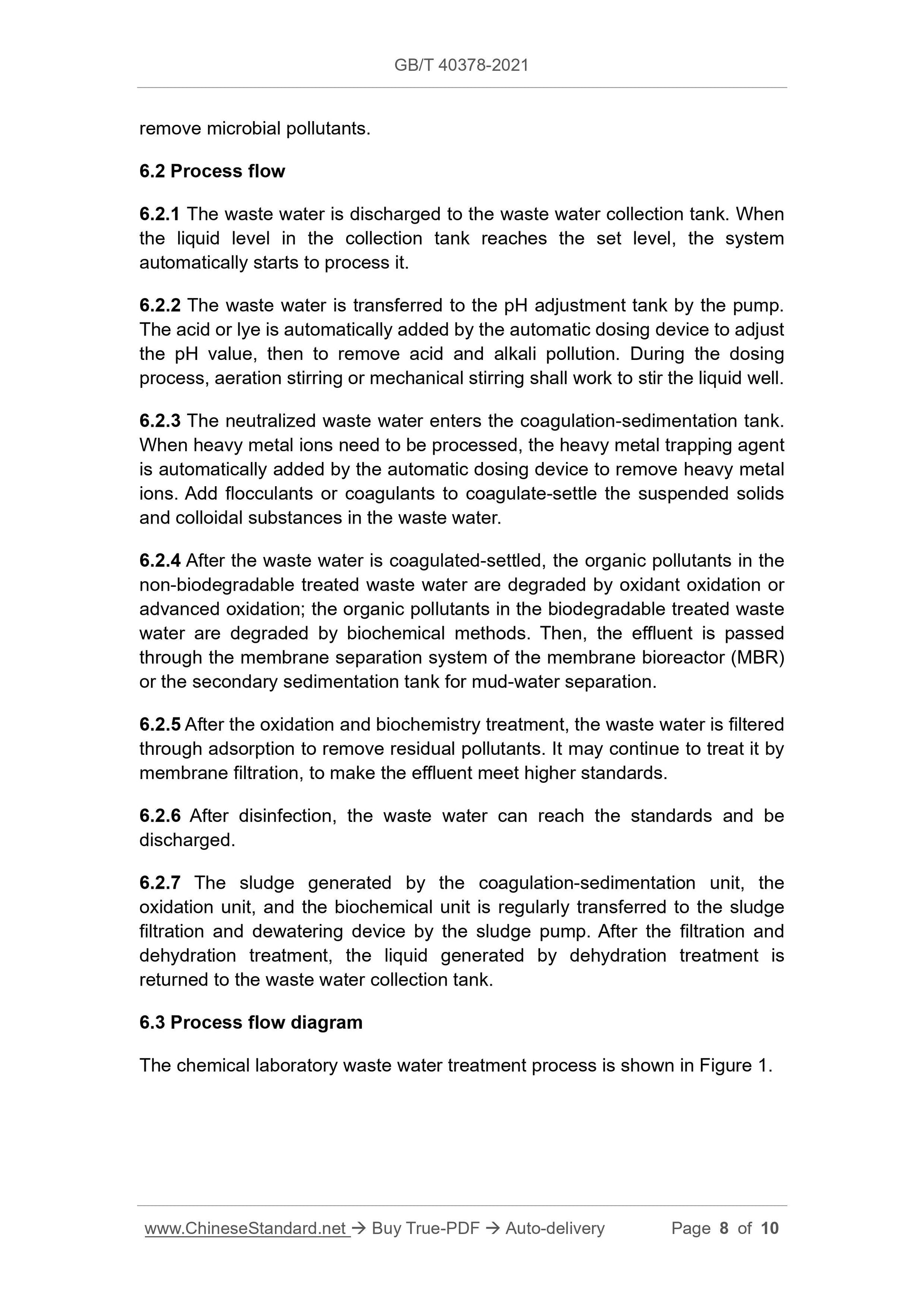1
/
of
5
www.ChineseStandard.us -- Field Test Asia Pte. Ltd.
GB/T 40378-2021 English PDF (GB/T40378-2021)
GB/T 40378-2021 English PDF (GB/T40378-2021)
Regular price
$110.00
Regular price
Sale price
$110.00
Unit price
/
per
Shipping calculated at checkout.
Couldn't load pickup availability
GB/T 40378-2021: Technical specification of treatment equipment for chemistry laboratory waste water
Delivery: 9 seconds. Download (and Email) true-PDF + Invoice.Get Quotation: Click GB/T 40378-2021 (Self-service in 1-minute)
Newer / historical versions: GB/T 40378-2021
Preview True-PDF
Scope
This document specifies the general requirements, unit requirements, treatmentand disposal methods, and environmental protection requirements for chemical
laboratory wastewater treatment equipment.
This document applies to on-site treatment devices and processes for
wastewater generated in chemical laboratories.
Basic Data
| Standard ID | GB/T 40378-2021 (GB/T40378-2021) |
| Description (Translated English) | Technical specification of treatment equipment for chemistry laboratory waste water |
| Sector / Industry | National Standard (Recommended) |
| Classification of Chinese Standard | Z05 |
| Word Count Estimation | 6,697 |
| Issuing agency(ies) | State Administration for Market Regulation, China National Standardization Administration |
Share
